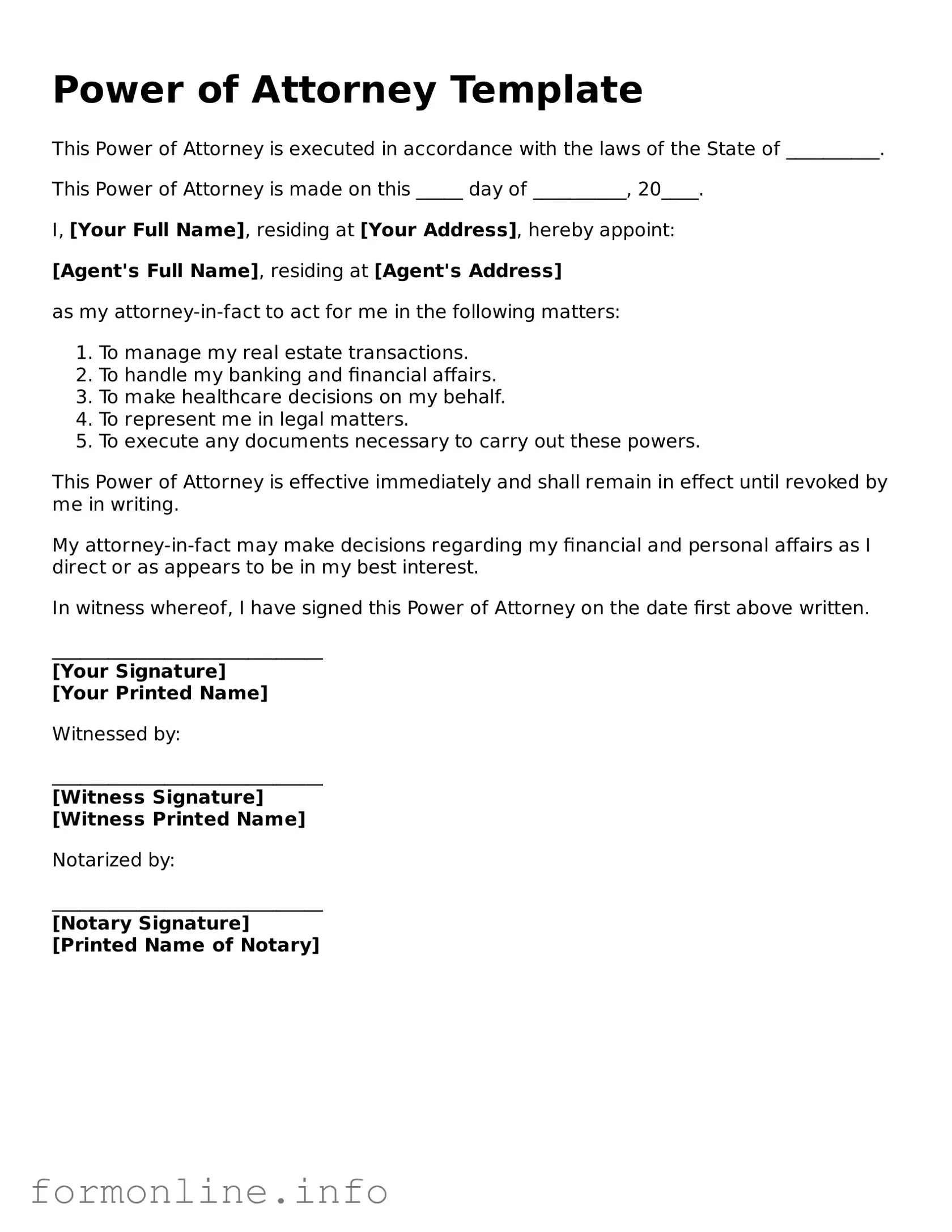A Living Will is a document that allows individuals to express their wishes regarding medical treatment in the event they become unable to communicate those wishes themselves. Like a Power of Attorney, a Living Will empowers someone to make decisions on your behalf, but it specifically focuses on health care choices. This document outlines what types of medical interventions you do or do not want, such as life support or resuscitation, ensuring that your preferences are honored even when you cannot voice them.
A Health Care Proxy is similar to a Power of Attorney in that it designates someone to make health care decisions for you if you are unable to do so. While a Power of Attorney can cover a broad range of financial and legal matters, a Health Care Proxy is focused solely on medical decisions. This document allows you to choose a trusted person to advocate for your health care preferences, ensuring that your values and wishes are respected in medical settings.
A Durable Power of Attorney is closely related to the standard Power of Attorney but includes a crucial distinction: it remains effective even if you become incapacitated. This means that if you are unable to manage your affairs due to illness or injury, the person you designate can continue to act on your behalf. This type of document is essential for long-term planning, providing peace of mind that your financial and legal matters will be handled according to your wishes, regardless of your health status.
A Financial Power of Attorney is another variant that specifically grants someone the authority to manage your financial affairs. This document allows your designated agent to handle tasks such as paying bills, managing investments, and filing taxes. Like a general Power of Attorney, it can be tailored to your specific needs, but it is focused solely on financial matters, making it easier for your agent to navigate your financial landscape without ambiguity.
The FedEx Bill of Lading form is an essential shipping document that facilitates the transportation of goods and provides clarity on the responsibilities of the carrier. It captures vital details about the shipment, ensuring that both shippers and recipients are aligned on the terms of service. For those interested in accessing this form and learning more about its utility, Top Forms Online is a valuable resource.
A Guardianship Agreement is a legal arrangement where an individual is appointed to care for another person, often a minor or someone unable to care for themselves. While a Power of Attorney designates someone to act on your behalf, a Guardianship Agreement involves a court process to appoint a guardian. This document is critical when there is no one available to make decisions for an individual, ensuring that their best interests are protected by a responsible party.
A Trust Agreement is a legal document that allows a person to place assets into a trust for the benefit of others. While it serves a different primary purpose than a Power of Attorney, both documents involve designating someone to manage your affairs. A Trust Agreement can provide a structured way to distribute your assets according to your wishes, whereas a Power of Attorney focuses on decision-making authority during your lifetime.
An Advance Directive combines elements of a Living Will and a Health Care Proxy. It allows individuals to outline their preferences for medical treatment while also appointing someone to make decisions on their behalf. This document is similar to a Power of Attorney in that it empowers a designated individual to act according to your wishes, ensuring that your health care choices are respected even when you cannot communicate them yourself.
A Will is a legal document that outlines how your assets should be distributed upon your death. While a Power of Attorney is effective during your lifetime and ceases upon your death, a Will comes into play after you pass away. Both documents are essential for estate planning, allowing you to express your wishes and ensure that your desires are followed, but they serve different purposes in managing your affairs.
A Bill of Sale is a document that transfers ownership of personal property from one party to another. While it may seem unrelated to a Power of Attorney, both documents involve the transfer of authority or ownership. A Bill of Sale provides proof of the transaction, while a Power of Attorney grants someone the authority to act on your behalf in various matters, including the sale of property.
A Release of Liability is a document that protects one party from legal claims by another. Similar to a Power of Attorney, which allows someone to act on your behalf, a Release of Liability requires you to give up certain rights. While the contexts are different, both documents involve the delegation of authority and the acceptance of certain responsibilities, highlighting the importance of clear communication and understanding in legal matters.
